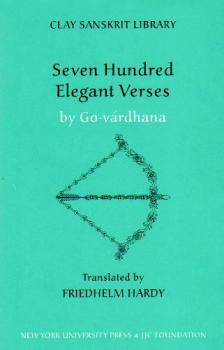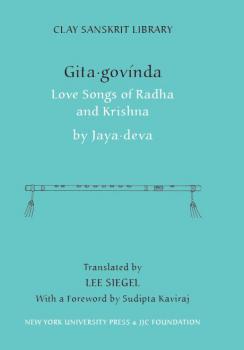Clay Sanskrit Library
Скачать книги из серии Clay Sanskrit LibraryMahabharata Book Nine (Volume 1)
The Book of Shalya recounts in gory detail the final destruction of the Káurava army and the defeat of its leader, Dur·yódhana. In this first volume heroic duels and martial speeches abound as Shalya, the king of the Madras, is made general of the Káurava army, only to be slaughtered in his turn.The Book of Shalya recounts in gory detail the final destruction of the Káurava army and the defeat of its leader, Duryódhana. In this first volume heroic duels and martial speeches abound as Shalya, the king of the Madras, is made general of the Káurava army, only to be slaughtered in his turn.Co-published by New York University Press and the JJC FoundationFor more on this title and other titles in the Clay Sanskrit series, please visit http://www.claysanskritlibrary.org
Bhatti’s Poem: The Death of Ravana
To the dry bones of grammar Bhatti gave juicy flesh in his poem, telling the greatest Indian story in elegant Sanskrit. Composed in the fourth century CE, in South India, ”Bhatti’s Poem: The Death of Rávana” is both a poetic retelling of Rama’s adventures, and a compendium of grammatical and rhetorical examples for students. Bhatti’s study aid to Pánini’s groundbreaking grammatical treatise, the “Eight Books,” gives examples disguised as the gripping, morally improving “Ramáyana” story. In Bhatti’s own words: “This composition is a lamp to those whose eyes have language as their goal.” Tradition has it that an elephant ambled between Bhatti and his pupils, interrupting their outdoors grammar class. By Hindu law this intrusion canceled class for a year. Lest time be lost, Bhatti composed his poem to teach grammar without textbooks. Ever since, “The Death of Rávana” has been one of the most popular poems in Sanskrit literature.
Handsome Nanda
Nanda has it all: youth, money, good looks and a kittenish wife who fulfills his sexual and emotional needs. He also has the Buddha, a dispassionate man of immense insight and self-containment, for an older brother. When Nanda is made a reluctant recruit to the Buddha's order of monks, he is forced to confront his all-too-human enslavement to his erotic and romantic desires. Dating from the second century CE, Ashva·ghosha’s Handsome Nanda portrays its hero’s spiritual makeover with compassion, psychological profundity, and great poetic skill.Co-published by New York University Press and the JJC FoundationFor more on this title and other titles in the Clay Sanskrit series, please visit http://www.claysanskritlibrary.org
The Rise of Wisdom Moon
The Rise of Wisdom Moon was composed during the mid-eleventh century by Krishna mishra, an otherwise unknown poet in the service of the Chandella dynasty, whose cultural and religious capital was Khajuraho. The early popularity of Krishna mishra’s work led to its frequent translation into the vernaculars of both North and South India, and even Persian as well. Famed as providing the enduring model of the allegorical play for all subsequent Sanskrit literature, The Rise of Wisdom Moon offers a satirical account of the conquest of the holy city of Benares by Nescience, of the war of liberation waged by the forces of Intuition, and of the freedom of the Inner Man that then follows the rise of Wisdom. But at the outset, when Nescience still has the upper hand, with minions like Lord Lust, such developments seem unlikely.
Seven Hundred Elegant Verses
When Go·várdhana composed his "Seven Hundred Elegant Verses" in Sanskrit in the twelfth century CE, the title suggested that this was a response to the 700 verses in the more demotic Prakrit language traditionally attributed to King Hala, composed almost a thousand years earlier. Both sets of poems were composed in the arya metre. Besides being the name of a metre, in Sanskrit arya means a noble or elegant lady, and Go·várdhana wished to reflect and appeal to a sophisticated culture. These poems each consist of a single stanza, almost as condensed and allusive as a Japanese haiku. They cover the gamut of human life and emotion, though the favorite topic is love in all its aspects.Co-published by New York University Press and the JJC FoundationFor more on this title and other titles in the Clay Sanskrit series, please visit http://www.claysanskritlibrary.org
Gita Govinda
Jayadeva’s Gitagovínda is a lyrical account of the illicit springtime love affair of Krishna and Radha, a god and goddess manifesting on earth as a cowherd and milkmaid for the sake of relishing the sweet miseries and rapturous delights of erotic love. The narrative framing their bucolic songs was composed under royal patronage in northeastern India in the twelfth century. It was to be performed for connoisseurs of poetry and the erotic arts, for aesthetes and voluptuaries who, while sensually engaged, were at the same time devoted to Krishna as Lord of the Universe. The text at once celebrates the vicissitudes of carnal love and the transports of religious devotion, merging and reconciling those realms of emotion and experience. Erotic and religious sensibilities serve, and are served by, the pleasures of poetry. In the centuries following its composition, the courtly text became a vastly popular inspirational hymnal. Jayadeva's songs continue to be sung throughout India in fervent devotional adoration of Krishna.
Garland of the Buddha's Past Lives (Volume 2)
In this second volume of the Garland of Past Lives , Aryashura applies his elegant literary skill toward composing fourteen further stories that depict the Buddha’s quest for enlightenment in his former lives. Here the perfection of forbearance becomes the dominant theme, as the future Buddha suffers mutilations from the wicked and sacrifices himself for those he seeks to save. Friendship, too, takes on central significance, with greed leading to treachery and enemies transformed into friends through the transformative effect of the future Buddha’s miraculous virtue. The setting for many such moral feats is the forest. Portrayed as home for the future Buddha in his lives as an animal or ascetic, the peaceful harmony of this idyllic realm is often violently interrupted by intrusions from human society. Only the future Buddha can resolve the ensuing conflict, influencing even kings, in the stories but also throughout Asian history, to express wonder and devotion at the startling demonstrations of virtue they encounter.
Garland of the Buddha’s Past Lives (Volume 1)
The Garland of Past Lives is a collection of thirty four stories depicting the miraculous deeds performed by the Buddha in his previous rebirths. Composed in the fourth century C.E. by the Buddhist monk Aryashura, the text’s accomplished artistry led Indian aesthetic theorists to praise its elegant mixture of verse and prose. The twenty stories in this first volume deal primarily with the virtues of giving and morality. Ascetics sacrifice their lives for hungry tigers, kings open their veins for demons to drink their blood, helmsmen steer their crew through perilous seas, and quail chicks quench forest fires by proclaiming words of truth. The experience is intended to arouse astonishment in the audience, inspiring devotion, through the future Buddha’s transcendence of conventional norms in his quest to acquire enlightenment and save the world from suffering. The importance of such stories of past lives in traditional Buddhist culture, throughout Asia and up to today, cannot be overestimated.
The Lady of the Jewel Necklace & The Lady who Shows her Love
King Harsha, who reigned over the kingdom of Kanauj from 606 to 647 CE, composed two Sanskrit plays about the mythical figures of King Udayana, his queen, Vásava·datta, and two of his co-wives. The plays abound in mistaken identities, both political and erotic. The characters masquerade as one another and, occasionally, as themselves, and each play refers simultaneously to itself and to the other.Co-published by New York University Press and the JJC FoundationFor more on this title and other titles in the Clay Sanskrit series, please visit http://www.claysanskritlibrary.org








